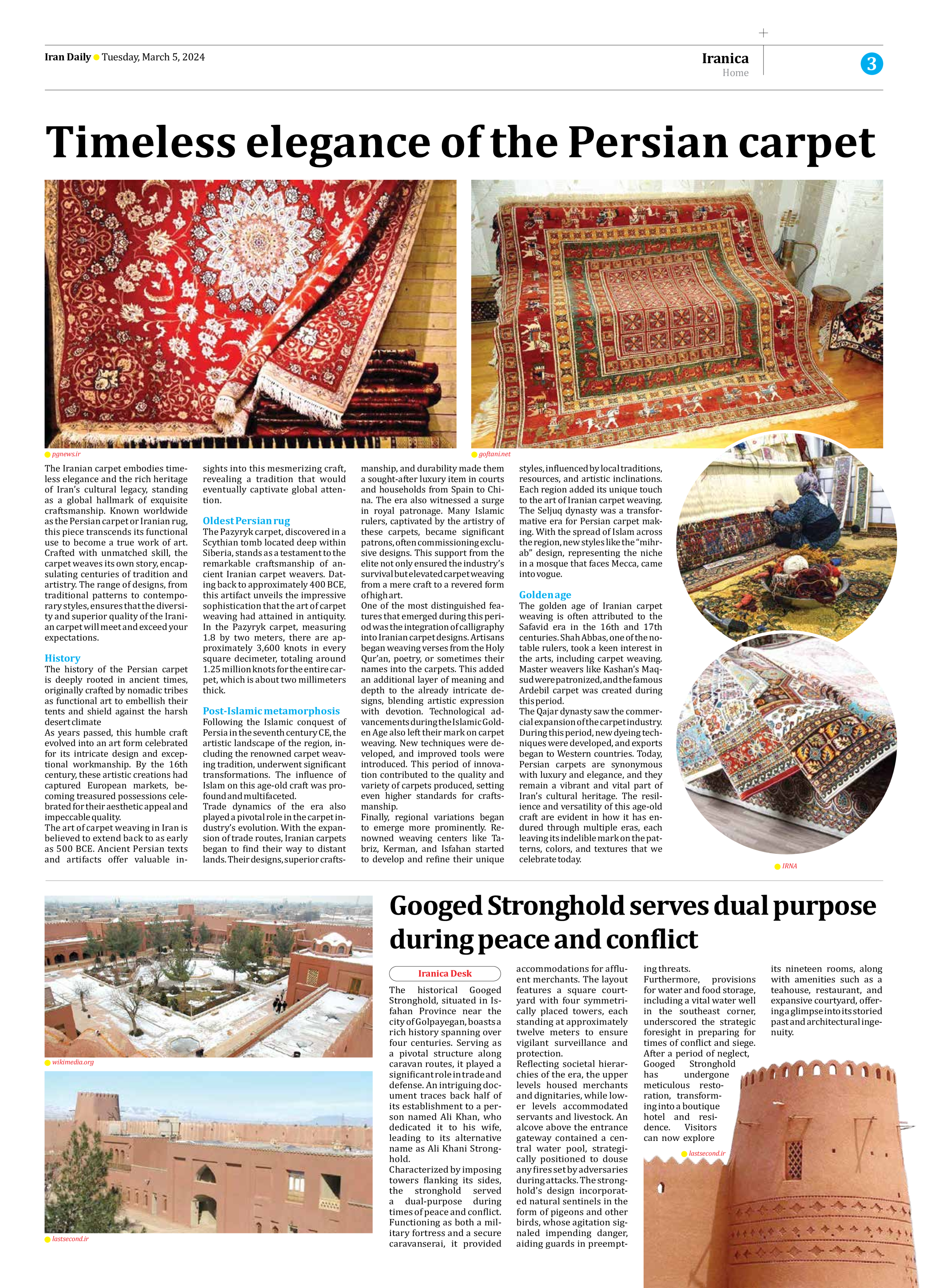
Timeless elegance of the Persian carpet
The Iranian carpet embodies timeless elegance and the rich heritage of Iran’s cultural legacy, standing as a global hallmark of exquisite craftsmanship. Known worldwide as the Persian carpet or Iranian rug, this piece transcends its functional use to become a true work of art. Crafted with unmatched skill, the carpet weaves its own story, encapsulating centuries of tradition and artistry. The range of designs, from traditional patterns to contemporary styles, ensures that the diversity and superior quality of the Iranian carpet will meet and exceed your expectations.
History
The history of the Persian carpet is deeply rooted in ancient times, originally crafted by nomadic tribes as functional art to embellish their tents and shield against the harsh desert climate
As years passed, this humble craft evolved into an art form celebrated for its intricate design and exceptional workmanship. By the 16th century, these artistic creations had captured European markets, becoming treasured possessions celebrated for their aesthetic appeal and impeccable quality.
The art of carpet weaving in Iran is believed to extend back to as early as 500 BCE. Ancient Persian texts and artifacts offer valuable insights into this mesmerizing craft, revealing a tradition that would eventually captivate global attention.
Oldest Persian rug
The Pazyryk carpet, discovered in a Scythian tomb located deep within Siberia, stands as a testament to the remarkable craftsmanship of ancient Iranian carpet weavers. Dating back to approximately 400 BCE, this artifact unveils the impressive sophistication that the art of carpet weaving had attained in antiquity. In the Pazyryk carpet, measuring 1.8 by two meters, there are approximately 3,600 knots in every square decimeter, totaling around 1.25 million knots for the entire carpet, which is about two millimeters thick.
Post-Islamic metamorphosis
Following the Islamic conquest of Persia in the seventh century CE, the artistic landscape of the region, including the renowned carpet weaving tradition, underwent significant transformations. The influence of Islam on this age-old craft was profound and multifaceted.
Trade dynamics of the era also played a pivotal role in the carpet industry’s evolution. With the expansion of trade routes, Iranian carpets began to find their way to distant lands. Their designs, superior craftsmanship, and durability made them a sought-after luxury item in courts and households from Spain to China. The era also witnessed a surge in royal patronage. Many Islamic rulers, captivated by the artistry of these carpets, became significant patrons, often commissioning exclusive designs. This support from the elite not only ensured the industry’s survival but elevated carpet weaving from a mere craft to a revered form of high art.
One of the most distinguished features that emerged during this period was the integration of calligraphy into Iranian carpet designs. Artisans began weaving verses from the Holy Qur’an, poetry, or sometimes their names into the carpets. This added an additional layer of meaning and depth to the already intricate designs, blending artistic expression with devotion. Technological advancements during the Islamic Golden Age also left their mark on carpet weaving. New techniques were developed, and improved tools were introduced. This period of innovation contributed to the quality and variety of carpets produced, setting even higher standards for craftsmanship.
Finally, regional variations began to emerge more prominently. Renowned weaving centers like Tabriz, Kerman, and Isfahan started to develop and refine their unique styles, influenced by local traditions, resources, and artistic inclinations. Each region added its unique touch to the art of Iranian carpet weaving. The Seljuq dynasty was a transformative era for Persian carpet making. With the spread of Islam across the region, new styles like the “mihrab” design, representing the niche in a mosque that faces Mecca, came into vogue.
Golden age
The golden age of Iranian carpet weaving is often attributed to the Safavid era in the 16th and 17th centuries. Shah Abbas, one of the notable rulers, took a keen interest in the arts, including carpet weaving. Master weavers like Kashan’s Maqsud were patronized, and the famous Ardebil carpet was created during this period.
The Qajar dynasty saw the commercial expansion of the carpet industry. During this period, new dyeing techniques were developed, and exports began to Western countries. Today, Persian carpets are synonymous with luxury and elegance, and they remain a vibrant and vital part of Iran’s cultural heritage. The resilience and versatility of this age-old craft are evident in how it has endured through multiple eras, each leaving its indelible mark on the patterns, colors, and textures that we celebrate today.







